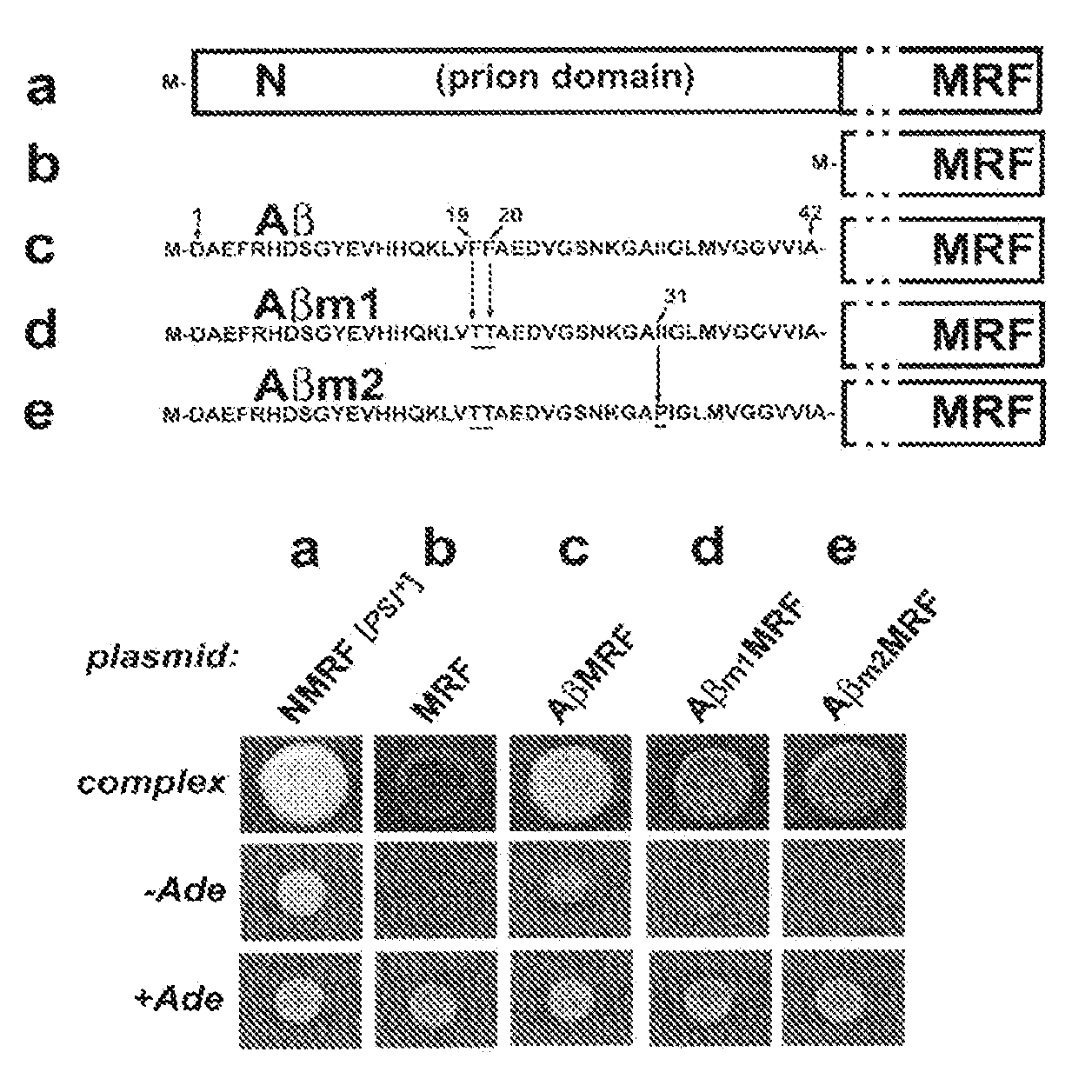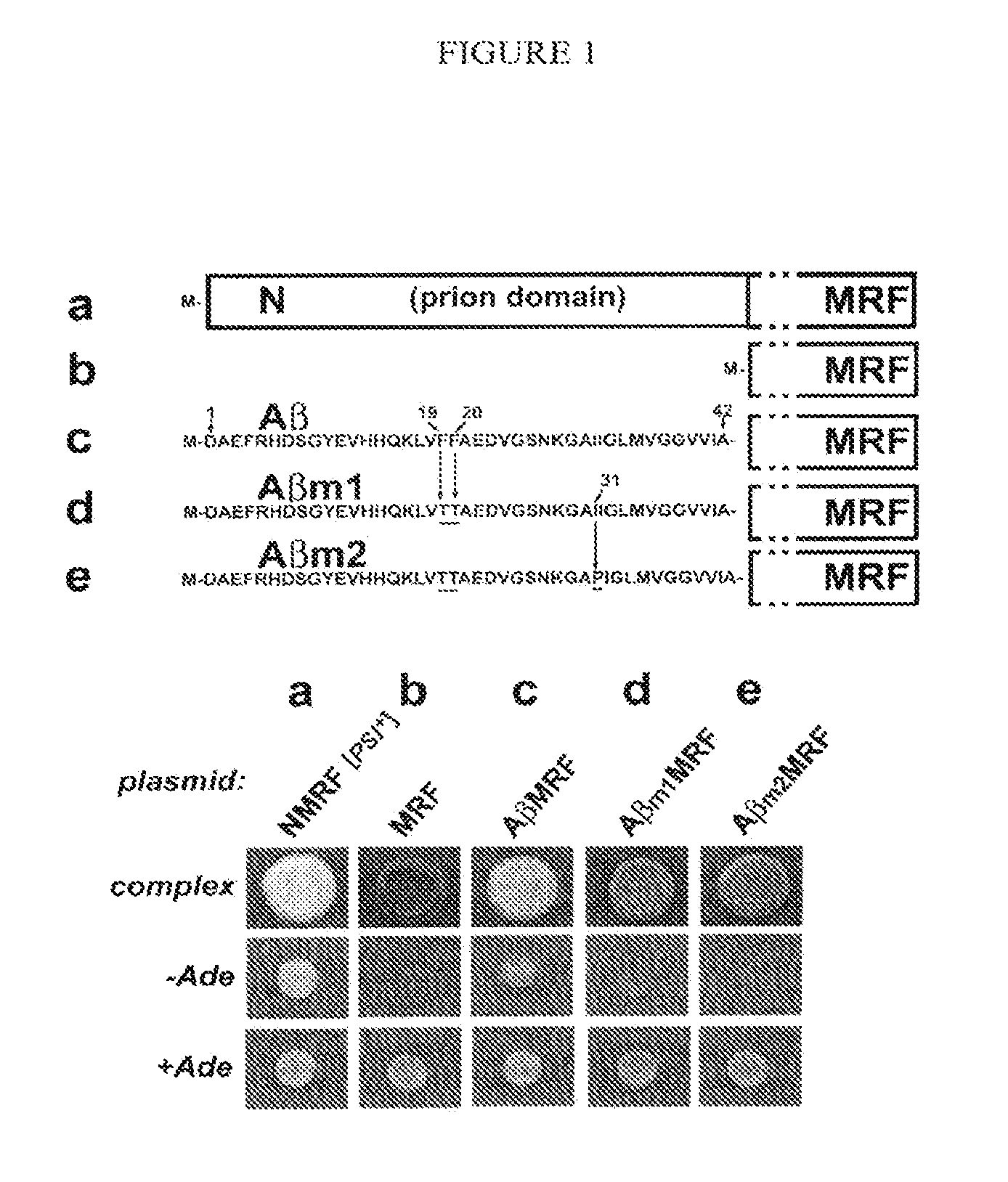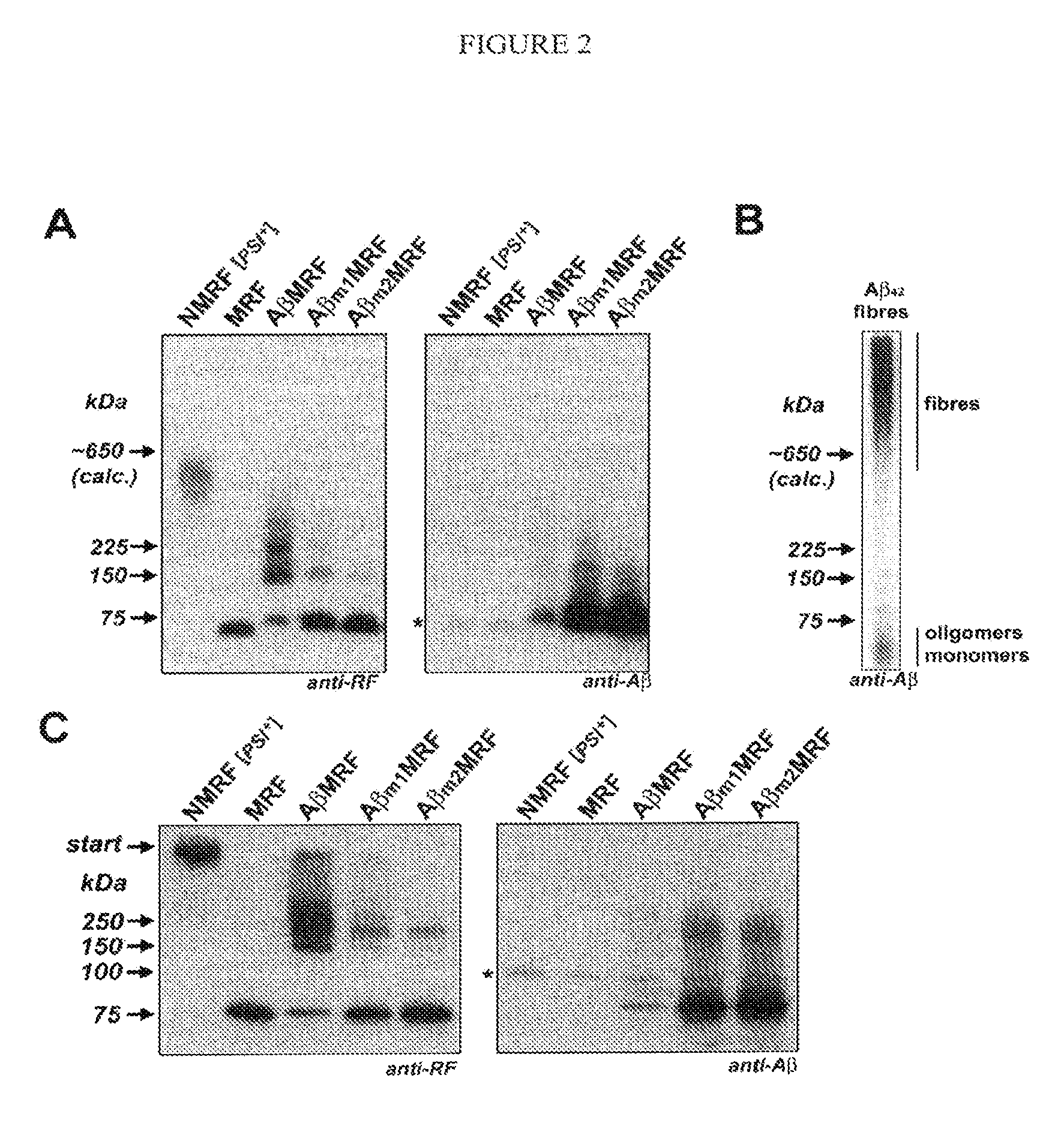Yeast Reporter System
- Summary
- Abstract
- Description
- Claims
- Application Information
AI Technical Summary
Benefits of technology
Problems solved by technology
Method used
Image
Examples
example 1
Model of Aβ42 Oligomerization
[0045]The activity of the essential translational termination factor Sup35p (NMRF) is conveniently assayed in vivo by examining the efficiency with which protein synthesis terminates at a premature stop codon (a nonsense-suppression assay, for review see [2, 33]; FIG. 1). The assay uses the ade1-14 nonsense allele. Strains carrying this mutation and bearing fully active NMRF produce only a truncated (inactive) version of Ade1p, and as a result cannot grow on synthetic medium lacking adenine (−Ade), while they grow normally on synthetic medium supplemented with adenine (+Ade). In addition, these cells accumulate a red intermediate of the adenine synthesis pathway when grown on complex medium. However, if the efficiency of translational termination at the premature stop codon of the ade1-14 allele is compromised, the cells gain the ability to grow on −Ade (i.e. they become Ade+) and do not accumulate red pigment. For example, cells expressing the complete ...
example 2
[0048]To test whether AβMRF formed SDS-stable oligomers, we analyzed yeast lysates treated with 1% SDS at room temperature by immunoblotting. As shown elsewhere [26], prionized NMRF ([PSI+]) migrates in the form of SDS-stable aggregates, while MRF, which is unable to prionize, is monomeric (FIG. 2). The pool of AβMRF contained both monomers and SDS-stable complexes migrating at the predicted positions for AβMRF low-n oligomers (dimers, trimers, and tetramers) (FIG. 2). In agarose gels, the AβMRF monomers (calculated molecular weight ˜73.7 kDa) migrated at ˜65 kDa (FIG. 2A), rather than at ˜77 kDa as they did in the acrylamide gels (FIG. 2C). Nevertheless, the positions of the SDS-stable complexes increased with monomer size increments in both gel systems. The SDS-stable oligomers of AβMRF were able to withstand treatment with 2% SDS at room temperature and disaggregated into monomers only after boiling (not shown). We hypothesize that the presence of Aβ42 confers AβMRF with the abil...
example 3
[0050]To obtain additional evidence that it is the intact Aβ42 peptide fused to the MRF that conferred the AβMRF fusion protein with the ability to form low-n oligomers, we analyzed point mutants of AβMRF by SDS-electrophoresis and immunoblotting. We expected that mutations in the aggregation-important regions of Aβ42 would inhibit oligomerization of the fusion protein. Consistent with our expectations, disruption of a single aggregation-important region of Aβ42 (Aβm1MRF) reduced its ability to form low-n oligomers (FIG. 2). Disruption of a second aggregation-important region (Aβm2MRF) further inhibited oligomerization of the protein. However, small amounts of Aβ m2MRF were found in the form of dimers. This is probably due to the fact that this construct still retained two out of four aggregation-important regions intact. The presence of Aβm2MRF dimers explains our observation that these cells were dark pink on complex medium, and were not entirely as red as when a non-tagged MRF pr...
PUM
 Login to View More
Login to View More Abstract
Description
Claims
Application Information
 Login to View More
Login to View More - R&D
- Intellectual Property
- Life Sciences
- Materials
- Tech Scout
- Unparalleled Data Quality
- Higher Quality Content
- 60% Fewer Hallucinations
Browse by: Latest US Patents, China's latest patents, Technical Efficacy Thesaurus, Application Domain, Technology Topic, Popular Technical Reports.
© 2025 PatSnap. All rights reserved.Legal|Privacy policy|Modern Slavery Act Transparency Statement|Sitemap|About US| Contact US: help@patsnap.com



